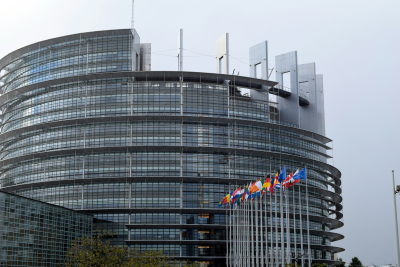Dotted among the deep green hills, fir trees and streams of Transylvania lays a string of fortified medieval Saxon churches. Beset by years of neglect and a lack of investment these beautiful historic buildings have received millions of euros in EU funded projects for restoration. But recent reports indicate that EU money earmarked for renovation has led to allegations of corruption and the destruction or “brutal revamp” of these delicate structures.
Some of these Saxon castle-churches are up to 800 years old and play an important role in the history and tourism in this region of Carpathian beauty. It seems archaeological surveys on the castles were either rushed and ignored or not carried out altogether. As a result old wooden beams have been sawn though and ancient plaster has been hacked-off walls and replaced with cement. The bidding process for restoration works has been marred by allegations of undue influence and a lack of transparency. As a result, historic roof tiles have been replaced by mass manufactured versions from one single supplier, despite concerns over the quality and suitability of the new tiles.
In the past five years €20 million has been spent by the European Regional Development Fund on restoration projects in Romania. Eighteen castles have so far been “brutally revamped” and another 12 are set for restoration work. With so much money going into these projects how has such damage occurred?
“It is a disastrous mix of corruption and the desire to get as much money out of the EU as possible for these projects that cause the problems. It means no one is interested in how the project looks or what is destroyed, but only how much money they can get for themselves and their friends’ companies,” Hans Hedrich, co-founder of the heritage and environmental NGO Neuer Weg, told the Telegraph.
According to Deutsche Welle the European Commission is organising a meeting with locals and stakeholders to hear criticisms and uncover what went wrong. Figuring out the mistakes made is a good first step. However, we at Transparency International have a tool that can help to guard against the misuse of funds and ensure the smooth running of a project: Integrity Pacts.
As we reported last month, without concrete measures in place, national and EU funds can end up getting lost to corruption through outsourcing contracts. Integrity Pacts are essentially an agreement between the government offering a procurement contract and the companies bidding for it. The pact states that the companies will abstain from bribery, collusion and other corrupt practices during the execution of a contract. A third party, usually from civil society, then monitors the entire project process, to ensure that the process is transparent, clean and fair.
Integrity Pacts can help safeguard EU funds, ensure that infrastructure projects and other public works are delivered efficiently, and stave off avenues for illicit gain. Transparency International and the European Commission are working together to roll out Integrity Pacts for structural and cohesion funded projects in several EU member states.
Most of the 130 medieval castles in Transylvania face collapse and the EU as well as UNESCO are looking to provide vital assistance in funding and supporting renovation work. However, this money must not lead to ruin. Integrity Pacts could help bring greater transparency and accountability to EU-funded restoration projects of these beautiful, historic castles.




